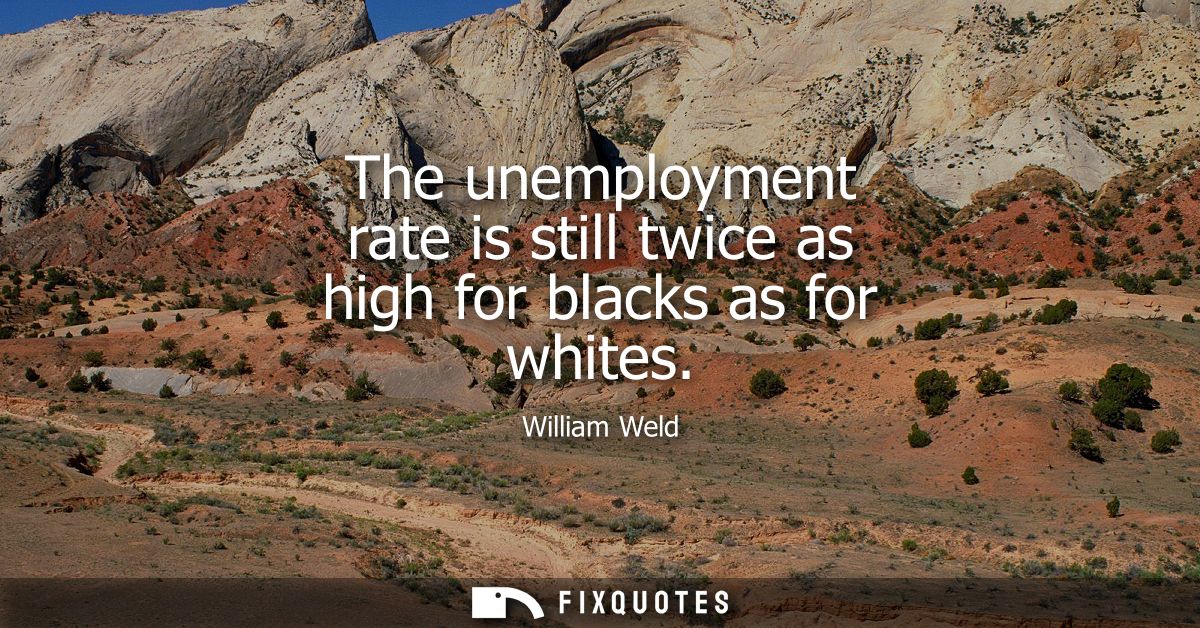"The unemployment rate is still twice as high for blacks as for whites"
About this Quote
William Weld draws attention to a persistent racial disparity in the labor market, highlighting that Black Americans experience an unemployment rate that is double that of White Americans. This contrast is not simply a fleeting statistical anomaly but reflects deeper, systemic issues rooted in the nation’s history and ongoing social dynamics. High Black unemployment rates have been documented for decades, persisting across fluctuating economic conditions, suggesting that the phenomenon is not solely tied to the changing tides of the overall economy.
Multiple factors contribute to this disparity. Historical discrimination in hiring, unequal access to quality education, and neighborhood segregation continue to limit opportunities for Black workers. Employers’ biases, both conscious and unconscious, can impact hiring decisions, leaving qualified Black applicants overlooked. In addition, Black Americans may have less access to influential social networks that facilitate job placements, further disadvantaging them in a competitive market.
The gap is also magnified by differences in the types of jobs available to each group. Black workers have historically been overrepresented in low-wage, less secure employment that is more vulnerable to economic downturns. When recessions hit, these sectors are often the first to suffer job losses, and recovery in those areas is slowest. Systemic barriers, such as limited public transportation in segregated neighborhoods, can further restrict access to employment opportunities located in other, often wealthier, parts of cities and suburbs.
This pronounced unemployment rate difference points to larger questions of equity and justice. Without targeted intervention, such as better education and training programs, stronger enforcement of anti-discrimination laws, and broader economic reforms, these disparities are likely to persist. William Weld’s observation serves as a call to recognize and address the structural inequalities that continue to shape labor market outcomes in the United States. Understanding both the numbers and the lived realities behind them is essential for forging a fairer and more inclusive society.
More details
About the Author

